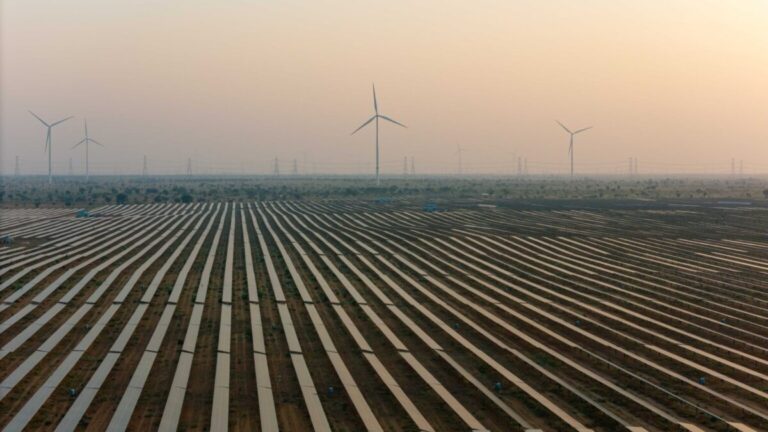India Ratings and Research says India will maintain the current pace of renewable energy capacity expansion due to a significant decline in equipment prices and continued policy support.
India Ratings and Research (Ind-Ra) expects India’s annual renewable capacity expansion to remain at 15 to 18 GW in fiscal 2025 and 2026. It said 75% to 80% of annual installations, or up to 14.5 GW, come from solar and about 20% from wind. Installations will be driven by a significant reduction in equipment prices, continued policy support, the availability of liquidity and the investment plans of major corporate players.
“However, implementation timelines for renewable capacity expansion would continue to depend on the regulatory stance on import duties on cells and modules, support for domestic cell and module production, and indigenous push towards domestic equipment sourcing,” said Ind-Ra.
The transition to renewable energy sources requires the deployment and development of energy storage capacity, given the intermittent nature of renewable energy for the stability of the electricity grid. Ind-Ra said it expects pumped storage hydropower projects to become a viable solution as battery storage is currently less economically viable.
Ind-Ra has maintained a neutral outlook on the power sector for FY 2025 as it believes that the overall utilization rate (PLF) of thermal power plants will continue to improve and move closer to 70% in FY 2025. will remain healthy due to higher energy demand, an increase in domestic coal production, slower capacity expansions and dependence on coal-based generation until sufficient storage capacity is built for the transition to renewables.
“Ind-Ra continues to see a mismatch between supply and demand in the energy market, which would lead to a continued increase in thermal power plant load factors and higher trading rates,” said Bhanu Patni, associate director of corporate ratings for Ind-Ra. . “Although the addition of solar has accelerated following a reduction in module prices and the addition of renewable capacity is likely to remain at more than 15 GW per year, effective storage options still need to be developed to maintain renewable capacity throughout to deliver in time. clock power.”
The agency said it expects trading market prices to remain high in fiscal 2025 due to higher demand and slower addition of thermal capacity.
This content is copyrighted and may not be reused. If you would like to collaborate with us and reuse some of our content, please contact: editors@pv-magazine.com.


